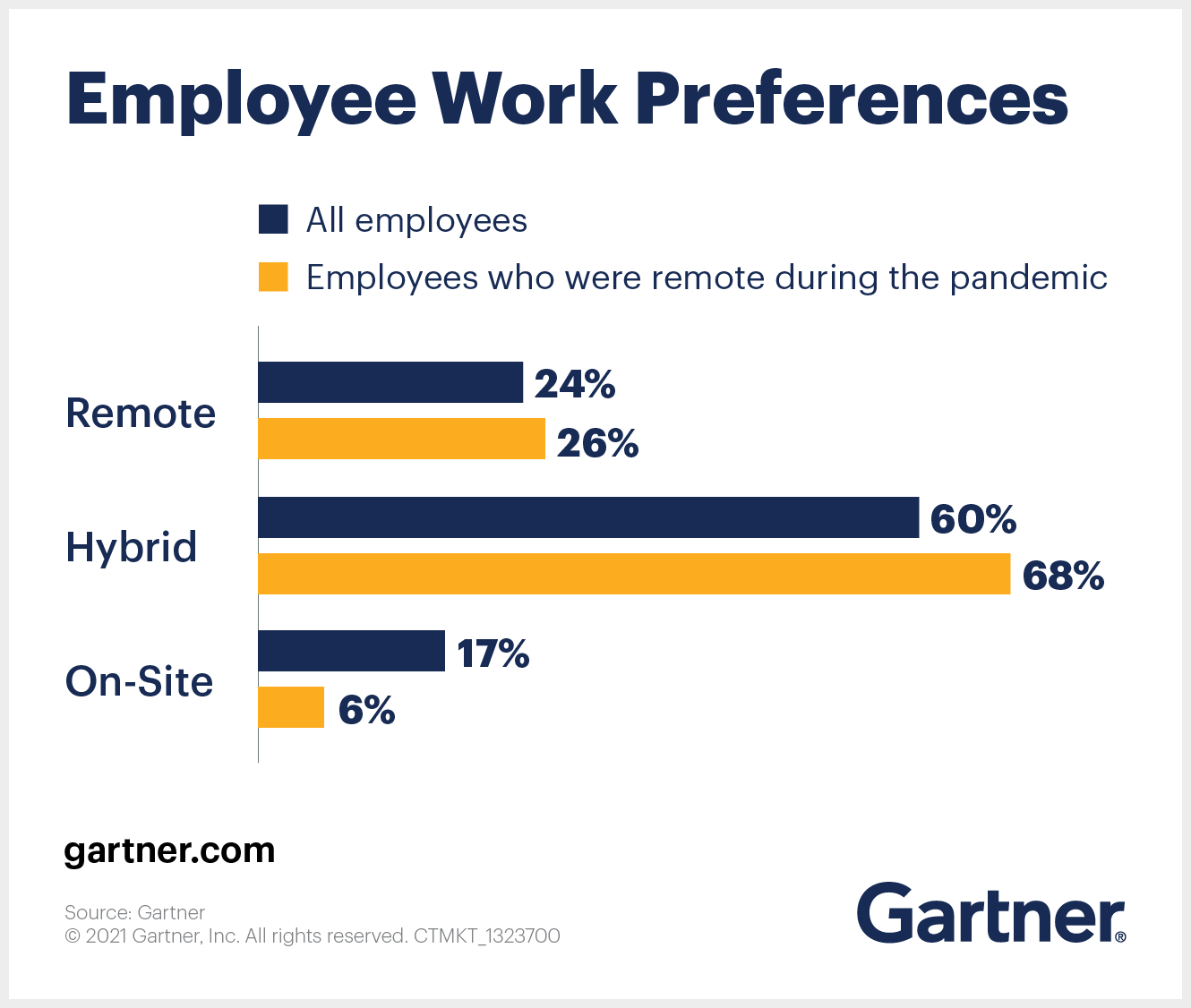As more organisations explore returning to work after COVID vaccinations are more widely distributed, executive leaders must consider how this presents significant risks to retention, performance and DEI.
- Gartner client? Log in for personalized search results.
Returning Employees to an Office? Consider the Talent Risks
June 03, 2021
Contributor: Swetha Venkataramani
As organisations decide when and how to return employees to physical workplaces, some still favour a “hard return”—a mandatory return to an on-site location for most of the working week. For many, health and safety has been the initial priority, but executive leaders must also consider the potential risks to retention, performance, and diversity, equity and inclusion (DEI).
“Forcing employees back into non-flexible work arrangements could leave organisations vulnerable to talent being actively poached by employers that offer the kind of flexibility employees have come to expect during the pandemic. Employees have proved they can be productive when remote and are now challenging employers to articulate why they should return,” says Brian Kropp, Chief of HR Research, Gartner.
Download eBook: Reinvent Your EVP for a Post-pandemic Workforce
Retention risks
More and more employees favour flexible work conditions. Over half of employees (55%) say that whether they can work flexibly will impact whether they stay at their organisations. Among employees who are currently working remotely or in a hybrid arrangement, 75% say their expectations for working flexibly have increased.

Today, more employees have work method flexibility than temporal and locational flexibility. For instance, around 71% of employees indicate that their job allows them to use personal initiative or judgement, but only 25% say that their role allows them to work from anywhere they want.
Download report: Adopt Long-Term Flexible Models
Performance risks
Gartner research shows that performance improves when employees are given flexibility over where, when and how much they work. Additionally, 76% of employees report that there has been an overall improvement in culture since the shift to remote work.

View resource centre: The Future of Work Reinvented
DEI risks
Forcing employees to return fully on-site is also a risk to diversity, equity and inclusion because underrepresented groups of talent have seen vast improvements in how they work since being allowed more flexibility—and could be lost if flexibility is not an option.
Seventy-three per cent of women who were fully on-site prior to the pandemic but have been remote since agree that their expectations for working flexibly have increased since the beginning of the pandemic.
Employees with a disability also report benefits: 56% of knowledge workers who have a disability say the extent to which their working environment helps them be productive has improved in the past 12 months.

View toolkit: Focus on advancing underrepresented talent groups
Be intentional about workplace decisions
Executive leaders also have business considerations that will affect their return-to-on-site strategies. For example, do reopening plans account for changes in customer demand, and what do customers expect? How are competitors handling the returning-to-workplace process, and should they align or buck industry or competitor trends?
“In the long term, though, many organisations will gravitate toward hybrid work environments, moving away from location-centric ways of thinking and incorporating a human-centric design that provides the kind of radical flexibility that can fuel performance,” says Kropp.
In the short term, then, HR leaders will need to work with executive leaders on key actions:
- Moving from a location-centric to a human-centric hybrid strategy. Determine the organisation’s workforce model of the future and establish a vision for the future workplace that best supports their workforce.
- Establish the purpose or role of on-site locations. HR leaders need to go beyond communicating expectations of employees in their on-site locations and articulate the value employees will get from using these spaces. Engage employees to crowdsource value expectations and use cases for different workspaces.
- Partner with IT and real estate to deliver the value proposition of the on-site location. Collaboration is key to leveraging the value of an on-site location. As organisations reopen offices to a more hybrid workforce, cross-functional collaboration will be critical to effectively delivering the value proposition of the office and other on-site workplaces.